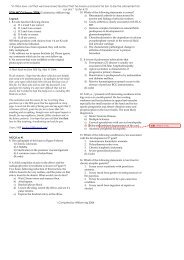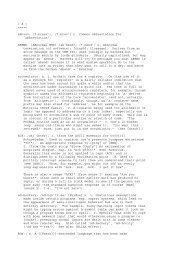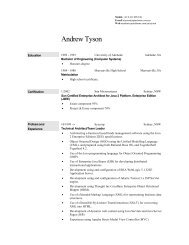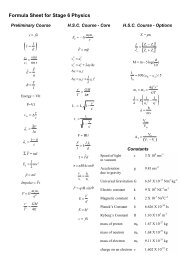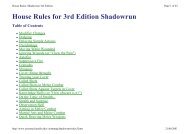Notes to Submission to the Productivity Commission Inquiry into the ...
Notes to Submission to the Productivity Commission Inquiry into the ...
Notes to Submission to the Productivity Commission Inquiry into the ...
Create successful ePaper yourself
Turn your PDF publications into a flip-book with our unique Google optimized e-Paper software.
This “hierarchical” perspective contrasts with both <strong>the</strong> “synonymous” view which defines<strong>the</strong> three concepts as equivalent, and with an “ei<strong>the</strong>r-or” view which defines a persononly in terms of whe<strong>the</strong>r <strong>the</strong>y do or do not have an impairment, activity restriction ordisability. From a policy perspective, <strong>the</strong> main problem with <strong>the</strong> synonymous view is thatit leads <strong>to</strong> inefficiently targeted policy while <strong>the</strong> problem with <strong>the</strong> ei<strong>the</strong>r-or view is that itis inequitable in failing <strong>to</strong> distinguish between degrees of impairment, activity restrictionor disability, thus treating individuals who are a significant distance from <strong>the</strong> norm nodifferently from those closer <strong>to</strong> <strong>the</strong> norm but beyond <strong>the</strong> definitional threshold. Forexample, where each of <strong>the</strong> curves have been normalised <strong>to</strong> have an average of zero andstandard deviation of 4, and where activity-restriction is defined in terms of beingassociated with an index value greater than say 7, and <strong>the</strong>n:• <strong>the</strong> ei<strong>the</strong>r-or view does not distinguish between an individual with an activityrestrictionindex value of 7.3 and ano<strong>the</strong>r individual associated with an index value of11.5• <strong>the</strong> synonymous view assumes that a person with an impairment index value of7.3 also has an activity-restriction index value and disability index value of 7.3 and• <strong>the</strong> hierarchy view suggests that a person may have an impairment index value of11.2 (i.e. significantly impaired relative <strong>to</strong> <strong>the</strong> norm), an activity-restriction index valueof 3.1 (if <strong>the</strong>y can afford a wide range of assistive devices) and a disability index 7.1 (if<strong>the</strong> public design infrastructure is enabling and inclusive of people with impairments).Implications• The critical difference between impairment, disability and activity restriction iseconomic. A policy focus on impairment involves expenditure on research anddevelopment of medical technologies; a focus on activity-restriction involvesenhancing purchasing power; and a focus on disability involves expenditure onenhancing <strong>the</strong> accessible design in <strong>the</strong> social environment.• Policy makers, researchers and statisticians need <strong>to</strong> distinguish betweenimpairment, activity restriction and disability. The confusion between <strong>the</strong> threeterms is not only evident in common language and understanding, but also in <strong>the</strong>Australian Bureau of Statistics’ Survey of Disability, Ageing and Carers wheredisability is treated as synonymous with activity restriction, as well as in much of<strong>the</strong> political debate over income support and workforce participation.• A major difficulty in policy involves distinguishing between <strong>the</strong> three concepts.That one person with a particular impairment might face little activity restrictionor disability in one area of life but significant activity restriction or disability inano<strong>the</strong>r is important for an efficient policy response. For example, a radioannouncer with a missing arm may not need special assistance <strong>to</strong> facilitateemployment participation, while a butcher with a missing arm will needassistance. Similarly, a courier with brain injury affecting vision-depth will notneed help a pho<strong>to</strong>grapher with <strong>the</strong> same brain injury will need it.• The definition of impairment, activity-restriction and disability is a socialconstruct which is fluid. In terms of <strong>the</strong> “hierarchy” perspective, <strong>the</strong>se categoriesare defined in terms of threshold values which are an arbitrary number of standard7



